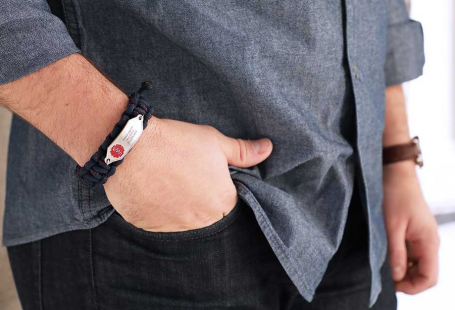Chronic obstructive pulmonary disease is a condition in which the airways are constricted, resulting in difficulty or discomfort in breathing. There are various safety considerations to be aware of if you or a loved one are living with COPD. Read on to learn how you can maintain a good quality of life with this condition.
Living with COPD shouldn’t be a nightmare.
While living with COPD can come with various physical challenges, there are steps you can take to improve your quality of life. These include tweaks to your exercise and nutrition habits, as well as being in tune with your emotional health.
Safety considerations for COPD management at home
Managing COPD at home is an important part of managing your condition. Below are steps you can take to prioritize COPD self-care.
1. COPD exercise precautions
It may initially seem unsafe, but regular exercise is an important part of a healthy lifestyle, even if you have COPD. Moderate exercise can help with everything from cardiovascular fitness to muscle strength to sleep quality and even shortness of breath. Stretching, aerobic exercise and resistance training are all safe forms of exercise; just refrain from physical activity if you’re experiencing a fever, nausea or chest pain, or you’re out of oxygen.
2. Showering with COPD
Showering with COPD might not be the first concern that comes to mind, but it is important to take certain precautions to avoid difficulty breathing while bathing. Using a shower chair and keeping a fan in the bathroom are steps you can take to minimize the risk of becoming short of breath in the shower.
3. Maintain a healthy lifestyle with COPD
There are various healthy habits you can maintain even if you have COPD. These include staying hydrated, exercising regularly, eating a nutritious and balanced diet, and taking your medications as prescribed.

COPD safety considerations for outside the home
If you have COPD, there are various COPD safety considerations you can take to minimize your risk of experiencing a shortness of breath episode outside the home.
Carry a medical ID
Wearing a medical ID such as those sold by American Medical ID can be useful if you find yourself in an emergency situation where you’re unable to communicate your condition to medical responders. A medical ID with pertinent details can make people quickly aware of your condition and what medications you’re on.
Learn COPD symptom management & relief techniques
Even with simple healthy lifestyle habits, there are also specific COPD relief measures you can take, especially if you’re overwhelmed about how to improve COPD.
1. Learn techniques to expel mucus
Your doctor can help show you techniques to expel mucus, such as controlled coughing or even using mucus clearing devices.
2. Maintain a healthy lifestyle
Things like exercising regularly, eating a balanced diet, getting enough sleep, staying hydrated and not smoking are all things that can help you manage COPD.
3. Take your medications as directed
Most people with COPD take prescribed medication to manage their condition. Take yours as prescribed and talk to your doctor about any concerns or before taking any new medications or supplements.
Key takeaways on how to manage COPD
In sum, while your condition can pose challenges related to difficulty breathing, there are various steps you can take to improve your quality of life when it comes to how to manage COPD.

Frequently Asked Questions
What are the triggers for COPD?
There are various factors that can aggravate your COPD, including cigarette smoke, allergens such as pet dander, dust, mold, and pollen, extreme temperatures and air pollution. These things can make you cough, wheeze, and have more shortness of breath than usual.
What are the 4 major risk factors of COPD?
The top risk factors for COPD are cigarette smoking and your environment, i.e. where you breathe every day at home, at work, or outside. Other risk factors include exposure to air pollution, breathing secondhand smoke, working with chemicals, dust, and fumes, a history of childhood respiratory infections, and having a genetic condition called Alpha-1 deficiency.
What causes COPD in nonsmokers?
COPD in nonsmokers is often caused by inhalation of secondhand smoke, especially if you live with a smoker. The above risk factors, such as environmental factors and air pollution, as well as genetic conditions, are also common culprits.
How common is COPD in nonsmokers?
According to the National Institutes of Health, nearly one-third of COPD cases occur in people who have never smoked.
Can asthma turn into COPD?
COPD often falls under asthma safety considerations. While they have similar symptoms, asthma won’t necessarily lead to COPD, though poor management and exposure to COPD triggers can eventually lead to the disease.
Resources
- https://www.lung.org/lung-health-diseases/lung-disease-lookup/copd/living-with-copd/physical-activity
- https://www.lung.org/lung-health-diseases/lung-disease-lookup/copd/living-with-copd
- https://my.clevelandclinic.org/health/articles/8697-coughing-controlled-coughing
- https://www.nationaljewish.org/conditions/health-information/living-with-copd/managing-copd
- https://www.umms.org/bwmc/health-services/pulmonary-disease/copd/symptoms-triggers/common-triggers
- https://www.nih.gov/news-events/news-releases/lung-development-may-explain-why-some-non-smokers-get-copd-some-heavy-smokers-do-not
- https://allergyasthmanetwork.org/news/when-asthma-meets-copd/






